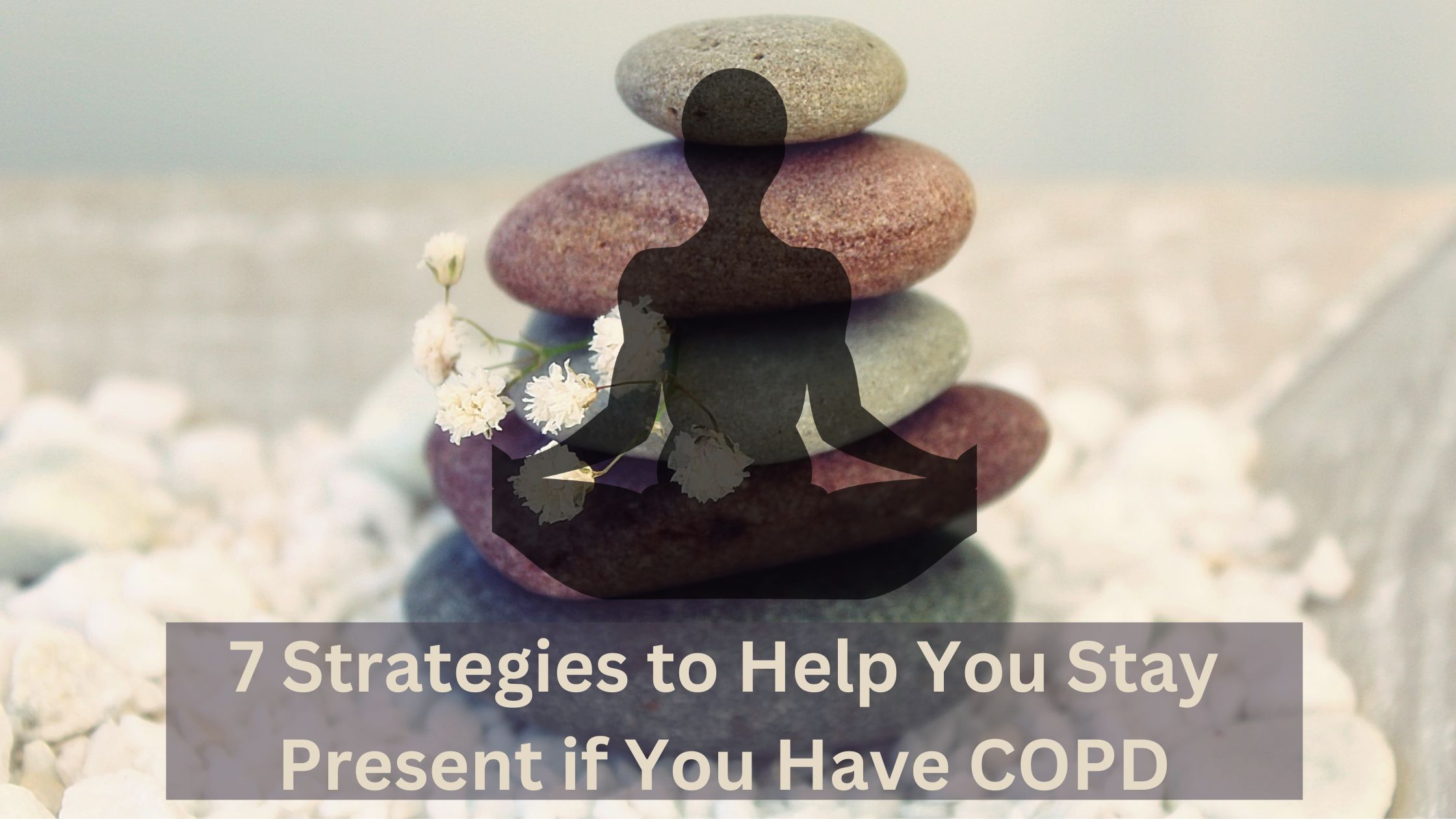
Mental illness represents a massive health burden in the United States. According to Hopkins Medicine, about 26% of people over the age of 18 live with a mental illness. However, this doesn’t even factor in that many people suffer from more than one mental health disorder. For example, individuals with a high amount of anxiety are more likely to experience bouts of depression as a result. This can lead to problems that are significantly more difficult to solve than a simple “change of mindset.”
When it comes to chronic obstructive pulmonary disease (COPD) and other progressive diseases, the prevalence of mental health issues is high. A study published in the European Respiratory Journal found that COPD patients were 85% more likely to experience anxiety disorders when compared to healthy control subjects. And it goes without saying that the more COPD progresses, the more likely it is to contribute to mental health problems as well.
In this blog post, we’re going to focus on one method of improving your mental health: living in the moment. While this subject may seem like a cliché in some ways, there’s actually a lot of clinical evidence to suggest that it can significantly improve your mental well-being even if it doesn’t outright solve them. Read on to learn more and be sure to bookmark this page or share it with anyone who may benefit from it.
What Does it Mean to “Live in the Moment”?
Simply put, living in the moment means focusing on the here and now. It means being fully present and involved in what you’re doing at the current point in time rather than focusing on the past or the future. This is an important concept to grasp if you want to live a healthy and fulfilling life. People who are able to train themselves to live in the moment find that they are significantly more productive, they build better and more meaningful relationships, and they’re less likely to encounter mental or emotional roadblocks.

Living in the moment, however, doesn’t necessarily mean completely tuning out the future or forgetting about the past. If you want to make meaningful decisions now, you need to learn from the past and value your future. But what you shouldn’t do is be overanalytical and dwell on thoughts or feelings, because this will only lead to more anxiety and more difficulty facing the challenges that are currently relevant in your life.
Why Do COPD Patients Struggle With Living in the Moment?
Receiving a diagnosis for any chronic illness can be a difficult thing to process and accept. Regardless of how much of an optimist someone is, everyone will experience some degree of distress after experiencing an event like this. Unfortunately, receiving a diagnosis for chronic obstructive pulmonary disease can be even more difficult. While COPD is one of the most preventable chronic illnesses in the world, there are risk factors that are unavoidable such as air pollution and genetic factors like alpha-1 antitrypsin deficiency.
-jpg.jpeg?width=539&name=dreamstime_xxl_175375363%20(1)-jpg.jpeg)
Despite these facts, many COPD patients still fall into the mindset that their illness could have been prevented if they had only made different lifestyle choices. Once this happens, it becomes very difficult to live in the moment without feeling guilty about the past or worried about the future. And while COPD can’t be cured, it’s important to remember that it’s a very treatable disease meaning that if you’re careful about your lifestyle choices in the here and now, you can significantly slow the progression of your disease.
Keep Your Mind Busy
One of the best things you can do for yourself if you want to stop stressing about the past or the future is to keep your mind busy. Probably one of the most common and effective ways of doing this is by reading. Whether you’ve been a life-long reader or you’ve never picked up a book in your life, this is the perfect way to train your mind to focus on the present. The subject of the book doesn’t matter too much, just as long as it’s a topic that interests you and doesn’t cause you to dwell on negative or unproductive thoughts.

If reading isn’t really your thing, you might consider giving games or puzzles a try. Many newspapers and magazines have crossword puzzles or sudoku games in them or you can find them online and simply print them off. If you have a smartphone, you can download word games from the app store and many of them are free of charge. However, be aware that spending too much time with electronics on a daily basis can increase your stress levels, so it’s important to take a break from time to time.

Last but certainly not least, you can keep your mind busy by completing simple tasks around the home like folding laundry, organizing, or doing dishes. According to the BBC, not only does the act of cleaning or doing menial tasks improve your mindset and provide you with a bit of exercise, but you’ll also boost your mood when you can look back on the work you’ve accomplished, no matter how small of a task it was.
Create a List of Things That are Important to You
The second strategy you can try to improve your mindset is to create a list of five or ten things that are important to you. This list can include anything like family, friends, or even short-term or life-long goals that you want to keep top of mind. But the important thing to remember is that you actually need to create a physical list that’s either written or typed up. This is a crucial detail because studies have shown that doing so will increase the likelihood that you will remember it. If you simply think about these things, they will likely get drowned out by any negative thoughts you’re experiencing.

If you want to take this one step further, you can even make copies of your list and post them around your home as a reminder. Put them in places that you frequent throughout the day such as your bedroom, kitchen, and living room. This way, no matter if your mind starts to wander, you will always be reminded of the things that are important to you and the things that you’re working towards.
Keep Track of Your Progress
Another thing you can do is keep track of your COPD treatment progress. Most people with COPD understand the importance of supplemental oxygen therapy, a well-balanced diet, and pulmonary rehabilitation, but not all people keep records of their progress. This is unfortunate because it’s much easier to change your lifestyle for the better if you have tangible evidence of its benefits. Otherwise, you might be left to question whether it’s helping or not and that your energy is better spent elsewhere.

There are two different factors to consider when it comes to the effectiveness of your lungs: lung function and lung capacity. Lung function is how effective the body is at using the oxygen it receives. Lung capacity is the ability of the lungs to take in air and remove carbon dioxide-rich air quickly. Lung capacity is something that can be improved whereas lung function cannot. Lung capacity can be tested at home using a device called a spirometer. Everyone should have one of these so that they can keep track of their progress.
Another way to keep track of your progress is to make a note of how you’re feeling throughout the day. Be sure to write the date next to your note so that you can look back on it over time to see what was working and wasn’t working. Over time, you’ll start to have a better idea of what kinds of things improve your lung health and what things don’t. It could also significantly boost your mental health because you’ll start to see that your lifestyle choices have a huge impact on how good or bad you feel on any given day.
Consider Cognitive Behavioral Therapy (CBT)
Cognitive behavioral therapy is a type of psycho-social intervention that’s designed to correct negative thoughts and behaviors. This type of treatment for mental illness became popular in the 1990s and it’s been effective for many people facing a wide range of issues. It’s often recommended for people with COPD who find themselves in a negative mental feedback loop and for people who are struggling to make the changes they need to treat their disease.

CBT sessions usually begin with identifying the problem. It’s important to be able to define exactly what the issue is if you want to be able to solve it. Once that’s done, your therapist will likely change the focus to your thoughts and feelings towards that problem. This is where most people begin to realize that they have an inaccurate or misguided vision of the problem they’re facing. Finally, your therapist will take steps to reverse negative or inaccurate thinking and replace them with ones that are constructive.
Practice Meditation
Meditation is a technique that’s been used for thousands of years. And while it’s largely used in a religious or spiritual context, it can also be a helpful tool for improving your mental health and peace of mind. There are many different types of meditation but by far the most popular one among COPD patients is Tai Chi. This is often referred to as “moving meditation” because rather than sitting on the ground motionless, you’ll be up on your feet moving. It’s popular among COPD patients because it enables them to get exercise while they work on their mental health.

One of the greatest parts about Tai Chi is that you don’t need an instructor to do it. You can either practice it in the safety of your own home or you can practice it in a park or some other quiet and safe area. As for learning how it’s done, we’ve put together a great guide to teach you the ins and outs as well as the many benefits it offers. Be sure to check it out here.
Quit Smoking if You Haven’t Already
Smoking cessation is not only the most important thing you can do for your physical health and to treat COPD, but it’s also one of the most important things you can do for your mental health. According to the National Alliance on Mental Illness (NAMI), about 44% of all cigarettes are smoked by people with a mental illness or substance abuse disorder. This is because there is a sort of circular loop that smoking causes.
Essentially, whenever you inhale cigarette smoke it triggers the release of dopamine in the brain. This is the main chemical responsible for feelings of pleasure and reward. This isn’t a temporary effect, however. Over time, smoking completely rewires the brain to make “smoking” the new normal. In other words, you need to be smoking cigarettes throughout the day just to feel normal. If you don’t, you’ll begin to feel intense withdrawals and cravings which can lead to a lot of emotional distress.

The effects of cigarettes on your physical health are even grimmer and can also impact your ability to live in the moment. Smoking inflames your lungs causing difficulty breathing, chronic cough, and impairs your immune system meaning you’re more likely to get sick. The result is more time spent at home, bedridden, and unable to break free from a sedentary lifestyle. Many COPD patients have reported that continuing to smoke with their disease has hampered their ability to pursue their passions and spend time with loved ones, all of which takes you away from living in the moment.
![]()
Many COPD patients fall into the mindset that the damage has already been done and that smoking cessation won’t improve their condition any, but this couldn’t be farther from the truth. Many people with COPD and chronic respiratory disease, in general, have been able to live an active lifestyle regardless of what stage of the disease they’re in. While the underlying lung damage will still be there, improving your diet, exercise routine, and dropping the cigarettes will undeniably improve your situation.
Aside from halting lung damage, smoking cessation will lead to immediate improvements in your body’s circulation. This term refers to your body’s ability to circulate blood throughout the body to different organs and tissues. Good circulation plays a very important role in your systemic health by preventing illnesses like heart disease, heart attacks, strokes, and even eases the burden on your lungs and heart.
![]()
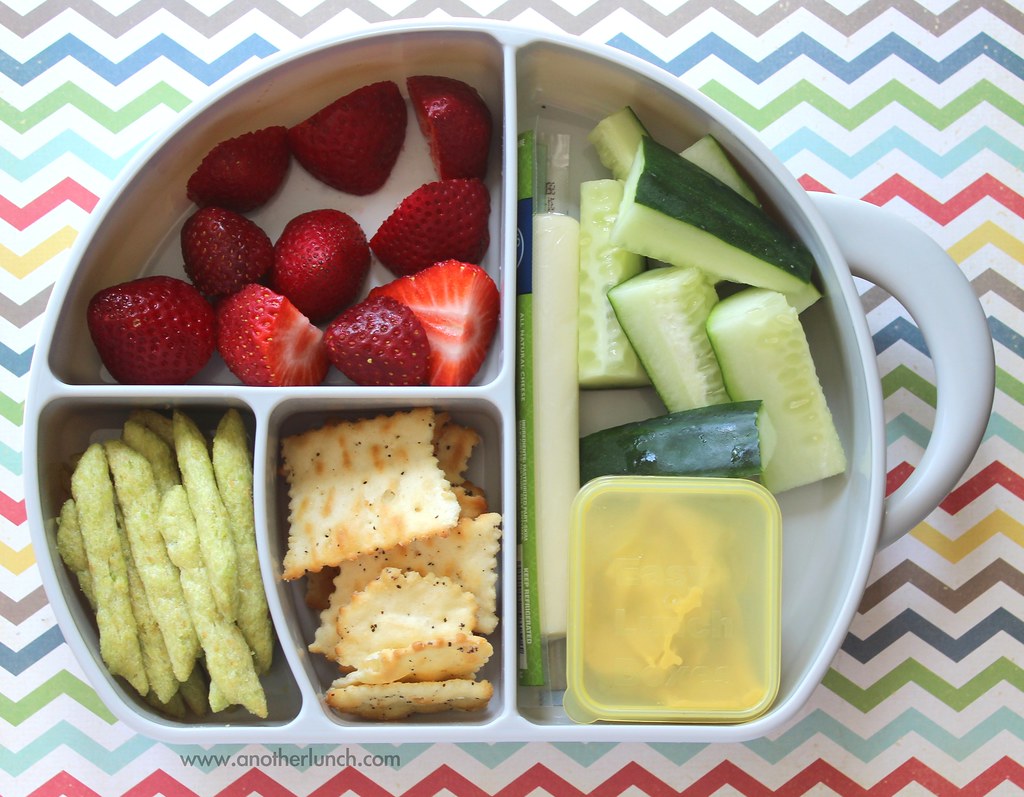 |
| Image Courtesy of Melissa on Flickr |
If you or someone you love has COPD, you might be concerned about diet and nutrition. What kinds of foods should you eat to stay healthy, and what should you avoid?
Eating right and sticking to a healthy diet is one of the best things anyone can do to feel good and keep their body healthy, with or without a chronic disease. In reality, however, eating well is difficult to do on a daily basis.
Even though just about everybody knows how important good nutrition is, many people still don't practice a healthy diet. This is sometimes due to a lack of time and motivation, but can also be a result of simply not knowing what kinds of foods are actually good for you and not.
If you have COPD, it's especially important to understand what a proper diet looks like and how to incorporate healthy foods into your everyday life. That's why, in this post, we're going to tell you about a wide variety of healthy foods you can eat to help you feel better and stay healthy with COPD.
Why a Nutritious Diet is Important for COPD
 |
| Image courtesy of FoodFacts on Flickr |
Living with a disease like COPD can make everyday tasks like eating more complicated. Many people with COPD even have to eat special, high-calorie diets to make up for the strain that the disease puts on their bodies.
COPD forces you to pay extra attention to many aspects of your health, including diet and nutrition. If you don't get all the vitamins and nutrients you need, you can experience increased COPD symptoms and accelerate how quickly your disease gets worse.
When you are struggling to manage a chronic disease like COPD, it's important to make every meal count by choosing foods that are wholesome and nutrient-dense. Eating healthy meals full of lots of fruits, veggies, whole grains, and healthy fats is key for maintaining a healthy weight and keeping your body strong.
You should also know that that what's not in certain foods is sometimes just as important as what is. Unhealthy foods with empty calories don't do you any good, and in the worst cases can contribute to weight gain, heart disease, and other health problems. That's why you should avoid processed foods and anything packed with sugar, simple carbs, and unhealthy fats.
Even among foods considered “healthy,” some are better than others at supplying your body with the nutrients it needs. There are many fruits, veggies, meats, and dairy products that are particularly rich in important vitamins, minerals, fatty acids, and other things your body needs to stay healthy with COPD.
It's much easier to make healthy decisions when you know what's good for you and have a lot of options to choose from. That's why we're providing you with the following list of 21 healthy foods for COPD to help you get started.
While you don't have to get every single item on this list, you should still eat a varied diet of healthy foods from different fruit, vegetable, dairy, and grain categories. This list will introduce you to the nutrient content and health benefits of a wide variety of foods so you can better understand how to meet all your nutritional needs.
How the Food You Eat Affects Your COPD

Before we get to the list, there are a few special factors you should take into consideration when planning a healthy diet for COPD. Certain foods, large meals, and weight gain can actually make your symptoms worse, so you have to pay extra special attention to what you eat.
{{cta('fa8abc2a-1e88-4fa3-82fd-1cb5b9ed43b2','justifycenter')}}
Inflammation
First of all, people with COPD should avoid eating foods that are known to cause inflammation. That's because inflammation puts strain on your body and takes energy away from your lungs, where it's most needed.
Foods that can cause inflammation include high-sugar foods like soda and sweets as well as processed meats like sausage. Besides being inflammatory, these foods are hard on your body and don't contain the nutrients your body needs to effectively manage your COPD.
Instead, you should eat healthy produce like leafy greens and fruits and veggies with lots of vitamin C and vitamin A. This helps your body get the nutrients it needs to prevent and manage inflammation and can improve how well your lungs function.
Manage Weight Gain and Weight Loss

Maintaining a healthy weight is also a top health priority if you have COPD. Both being underweight or being overweight can hurt your lung function and make it more difficult to breathe.
If you are underweight, you're likely to have worsened symptoms like weakness, fatigue, and shortness of breath. Weight loss and malnutrition can also weaken your immune system, break down your muscles, and increase your chances for infection, exacerbations, and death.
Excess weight is particularly dangerous for people with COPD, because it can quickly start a downward spiral of physical decline. Being overweight makes it more difficult to stay active, puts extra weight and strain on your chest that makes it difficult to breathe, and also increases the amount of oxygen your body needs to function.
Pay Attention to Antioxidants

Research shows that people who have COPD experienced increased oxidative stress in their lungs and elsewhere in their bodies. This means that they have an excess of inflammatory compounds, called oxidants, that can cause irritation, tissue damage, and other complications.
Every person's body produces antioxidants, which are molecules that neutralize oxidants and prevent them from doing harm. Most healthy people are able to produce enough anti-oxidants to keep the oxidants in check, but people with COPD often don't.
Research shows that people with COPD have an excess amount of oxidants that throws off their body's delicate oxidant/antioxidant balance. When this happens and the balance tips in favor of oxidants, it causes oxidative stress.
That's why some doctors recommend that people with COPD counteract their elevated oxidant levels by increasing their dietary antioxidant intake. There are many fruits, vegetables, and other foods that are rich in antioxidants, and it's thought that eating more of these foods can help your body restore a proper oxidant/antioxidant balance.
Some of the most common antioxidants include vitamin C, vitamin E, beta-carotene, selenium, and manganese, which are abundant in a variety of fruits and vegetables. However, research on antioxidants in foods is still ongoing, and researchers don't yet know if eating antioxidant-rich foods is a reliable way to combat oxidative stress.
Eat Fewer Carbohydrates

If you have COPD, you should avoid simple carbohydrates at all costs. Not only are simple carbs empty calories, but having too many carbohydrates in your diet can actually make your COPD symptoms worse.
To understand how carbohydrates affect COPD, you have to first understand how your lungs process carbon dioxide. Carbon dioxide is a waste product that is made from all kinds of metabolic processes in your body, including when you digest food.
When foods are broken down, the carbon waste products go into your blood and are carried to your lungs. When you breathe, the carbon waste is expelled from your body via carbon dioxide in your breath when you exhale.
Carbohydrates, in particular, tend to produce a lot of carbon waste compared to other nutrients, like fat and protein. This means that carbs increase the burden on your lungs to expel the carbon dioxide waste. which can lead to increased COPD symptoms like breathlessness and wheezing.
This is why most doctors recommend that people with COPD eat a diet that's high in fats and low in carbohydrates. This reduces strain on the lungs, reduce COPD symptoms, and make it easier to breathe and exercise.
Eat Small Meals

Doctors often recommend that people with COPD forego traditional mealtimes and instead eat 4-5 smaller meals spaced throughout the day. That's because, when you eat larger meals, it can put pressure on your lungs and diaphragm and make it more difficult to breathe.
Smaller meals are easier to digest and are less likely to cause bloating, indigestion, and breathing discomfort. It also helps you control your portion sizes and eat a wide variety of healthy foods every day.
Eat Nutritious, High-Calorie Foods

Many people with COPD have to eat extra calories every day to make up for the extra energy that their respiratory muscles use to breathe. If your doctor puts you on a high-calorie diet, it's important to fill in those extra calories with healthy, nutrient-packed foods.
Many of the highest-calorie foods are also the least nutritious; think of ice cream, soda, potato chips, and other processed snacks, for example. Instead of eating junk foods with empty calories, choose nutrient-dense, high-calorie foods like nuts and dairy. That way you can get enough calories and maintain a healthy weight while also limiting the amount of salt, sugar, and simple carbs in your diet.
A Final Consideration: Talk to Your Doctor
Depending on your unique physiology and the severity of your disease, you might have special dietary needs and restrictions. That's why, as one final consideration before we get to the list of healthy foods you should eat for COPD, we want to emphasize the importance of talking to you doctor about diet and nutrition.
Your regular doctor or a dietitian can often give you valuable, individualized advice that you can't get anywhere else. They can also help you put together a personalized nutrition plan to help set you on the right track.
As long as you don't have special dietary restrictions, you can use all the foods on this list to make a wide variety of healthy meals. So, without further delay, here's 21 healthy foods you can eat as part of a healthy diet for COPD.
21 Healthy Foods You Can Eat to Stay Healthy with COPD

Foods Packed with Healthy Carbohydrates
Research shows that, when you have COPD, eating too many carbohydrates increases the strain on your respiratory system and makes it more difficult to breathe. While a certain amount of carbohydrates are necessary for a balanced diet, you should eat them in moderation and choose whole foods packed with complex carbohydrates like whole grains and wheat pastas.
Researchers recommend that people with COPD get about 25% of their calories from carbohydrates.
Ancient Grains (Including Quinoa, Barley, and Buckwheat)

Quinoa, buckwheat, and barley, are among a group of whole grains often known as “ancient grains.” Ancient grains are different from modern grains in the sense that they have changed very little over the past several hundreds of years.
Ancient whole-grains are especially rich in fiber, protein, and vitamins, and also tend to be more calorie-dense than modern whole grains. For example, one cup of spelt has about 7.5 grams of fiber and 10.7 grams of protein, while a cup of brown rice only has about 3.5 grams of fiber and 5 grams of protein.
Quinoa, black rice, and other ancient grains are easy to prepare and great for digestion. They also contain high amounts of magnesium, which is extremely important for lung function and may even help prevent COPD exacerbations.
What's more, quinoa and buckwheat are naturally gluten-free, which makes them a great option for people with Celiac disease or other gluten intolerances. If you're looking to add healthy carbohydrates to your diet, the ancient grains are a great place to start.
Here are some examples of healthy ancient grains:
- Quinoa
- Millet
- Black BarleyBlack Rice
- Spelt
- Teff
Whole-Grain Breads and Pastas

Whole grains like wheat breads and wheat pastas are an important part of any healthy diet, but they can be particularly important for people with COPD. A diet rich in whole grain foods can reduce inflammation, improve digestion, help you maintain a healthy weight, and even reduce your risk of heart disease and diabetes.
Breads, rolls, crackers, tortillas, and pastas can all be healthy sources of carbohydrates when eaten in moderation. However, you should always opt for nutritious, whole-grain versions of these foods instead of the less-healthy, processed white grains.
White breads and pastas have been stripped of much of their nutritional value and are full of simple carbohydrates that can raise your blood sugar and leave you feeling less satisfied after meals. Whole-grain carbohydrates, on the other hand, fill you up and provide energy for much longer because they take more time to digest.
Oats

Photo by: Favorece
Like other whole grains, oats are a great source of healthy carbohydrates and fiber for people with COPD. A diet that includes regular helpings of oats can reduce your risk for cardiovascular disease, cancer, and type 2 diabetes.
One of the best things about oats is their high amounts of soluble fiber, which is known to lower cholesterol and prevent heart disease. It also contains a lot of short-chain fatty acids, which improve digestion and are known to have potent anti-cancer and anti-inflammatory properties.
Foods Packed with Healthy Fats
Healthy fats are perhaps the most important nutrients you should seek out if you have COPD. Most doctors recommend eating a low-carb, high-fat diet because it can improve COPD symptoms and reduce the amount of strain that eating puts on your respiratory system.
A high-fat diet allows your body to get the extra sustenance it needs to breathe without upsetting your nutrient balance. However, it's till important to watch your fat intake so it doesn't become excessive, especially if you are at risk for heart disease.
Most doctors recommend that people with COPD get about 55% of their calories from fat.
Vegetable Oils

While it's important to eat a lot of healthy fats when you have COPD, it's just as important to choose the right kinds. You should try to use unsaturated fats, like vegetable oils, which are considered much healthier than saturated animal fats like butter and lard.
Plant-based fats like olive oil and vegetable oil have been associated with a variety of health benefits, including lowered cholesterol and a reduced risk for heart disease and type 2 diabetes. When cooking on the stove or adding any fats to your meals, try to use plant-based, unsaturated fats as much as possible.
But how do you tell saturated and unsaturated fats apart? A good rule of thumb is that unsaturated fats (like vegetable oils) are liquid at room temperature, while saturated fats (like butter) are not.
Olive oil, in particular, tastes great on meats, breads, in marinades, and in dressings. Try mixing olive oil with your favorite vinegar and spices to make a delicious homemade salad dressing that's full of healthy, unsaturated fat.
Here are some examples of healthy vegetable oils:
- Olive Oil
- Canola Oil
- Peanut Oil
- Soybean Oil
- Sunflower Oil
- Safflower Oil
- (Avoid coconut oil and palm oil, because they contain a lot of saturated fat.)
Cold Water Fish

Cold water fish are a fantastic source of omega-3 fatty acids. Omega-3's are a particularly healthy type of fat which is known to improve lung function, prevent heart disease, and reduce your risk for infection and inflammation. Salmon, tuna, trout, cod, and anchovies are just a few examples of cold water fish that are high in omega-3.
When picking out fresh fish at the store, you should opt for wild-caught varieties, which tend to be cleaner and higher in omega-3's. Farm-raised fish are often fattier, less nutritious, and sometimes grown in dirty environments.
However, one thing you should watch out for when adding extra fish in your diet is eating too much mercury. Fish like tuna, mackerel, and salmon are known for having higher levels of mercury, and it's important to follow US guidelines and only eat high-mercury fish in moderation.
Here are some examples of healthy cold water fish:
- Cod
- Haddock
- Herring
- Atlantic Mackerel
- Mahi Mahi
- Trout
- Salmon
- Pollock
- Whitefish
- Sardines
Nuts

Nuts are high in calories, but they are also chock full of healthy protein and unsaturated fats. Nuts also tend to be high in fiber, vitamin E, and plant sterols, which can reduce blood cholesterol levels.
Nuts are known for containing heart-healthy nutrients that can help protect your arteries and reduce your risk for heart disease. This makes them a great option for people with COPD who are at a higher risk for cardiovascular complications.
Nuts are also a great choice if you are underweight or want to prevent COPD-related weight and muscle loss. They are nutritious and delicious to eat raw and take little or no preparation, but they still contain enough calories and protein to help you stay strong and maintain a healthy BMI.
Nuts are perfect for satisfying hunger in-between meals and they're exceptionally easy to pack up and take with you for an extra snack when you leave the house. They're also a great addition to meals; try adding some extra nuts to salads, rice, meat dishes, and baked goods for an extra dose of healthy fat and protein.
Here are some examples of healthy nuts:
- Almonds
- Walnuts
- Pistachios
- Cashews
- Brazil Nuts
- Pecans
- Macadamia Nuts
- Hazelnuts
Foods Packed with Healthy Protein
Lots of lean, healthy protein is important in any diet, but it should be a special priority for anyone with COPD. People who suffer from the disease often have difficulty getting enough protein, which can cause their bodies to break down their own muscles and become weak.
Doctors recommend choosing lean sources of protein like fish, eggs, and dairy instead of red and processed meats like bacon and ground beef. Most people need about 1.5 grams of protein for every 2.2 pounds of body weight, and doctors recommend that people with COPD get about 20% of their calories from protein.
Beans and Legumes

Beans and legumes are great sources of protein because they are lean, nutritious, and absolutely packed with fiber. They are also a good source of complex carbohydrates and contain a lot of zinc, which research shows may improve COPD symptoms and increase levels of beneficial antioxidants.
Beans and legumes are also one of the most inexpensive sources of healthy protein, especially if you buy dried beans and cook them yourself. However, canned varieties are also notoriously cheap and they're a great choice if you need to conserve time and energy.
A single ½ cup serving of beans contains about 8 grams of protein, 8 grams of fiber, and at least 300 milligrams of potassium. Beans make a hearty and flavorful addition to just about any meal, and they're especially delicious in rice dishes, soups, and salads.
Here are some examples of healthy legumes:
- Red, green, and brown lentils
- Chickpeas
- Soybeans
- Edamame
- Kidney beans
- Split Peas
Chicken and Other Lean Meats

Chicken is lean, inexpensive, and one of the best healthy sources of protein. Chicken is a great daily staple because it's nutritious, extremely versatile, and relatively easy to prepare.
To keep your chicken lean and healthy, choose white meat instead of dark meat and remove the skin, which is the fattiest part. It's also best to cook your chicken by grilling it or baking it in the oven, that way you can avoid adding extra fats as you have to when preparing it by pan-frying or deep-frying.
Try eating grilled or baked chicken along with rice, pastas, soups, and veggies. There are endless ways to prepare and flavor chicken, so get creative and try different dishes so you never get tired of this great protein source
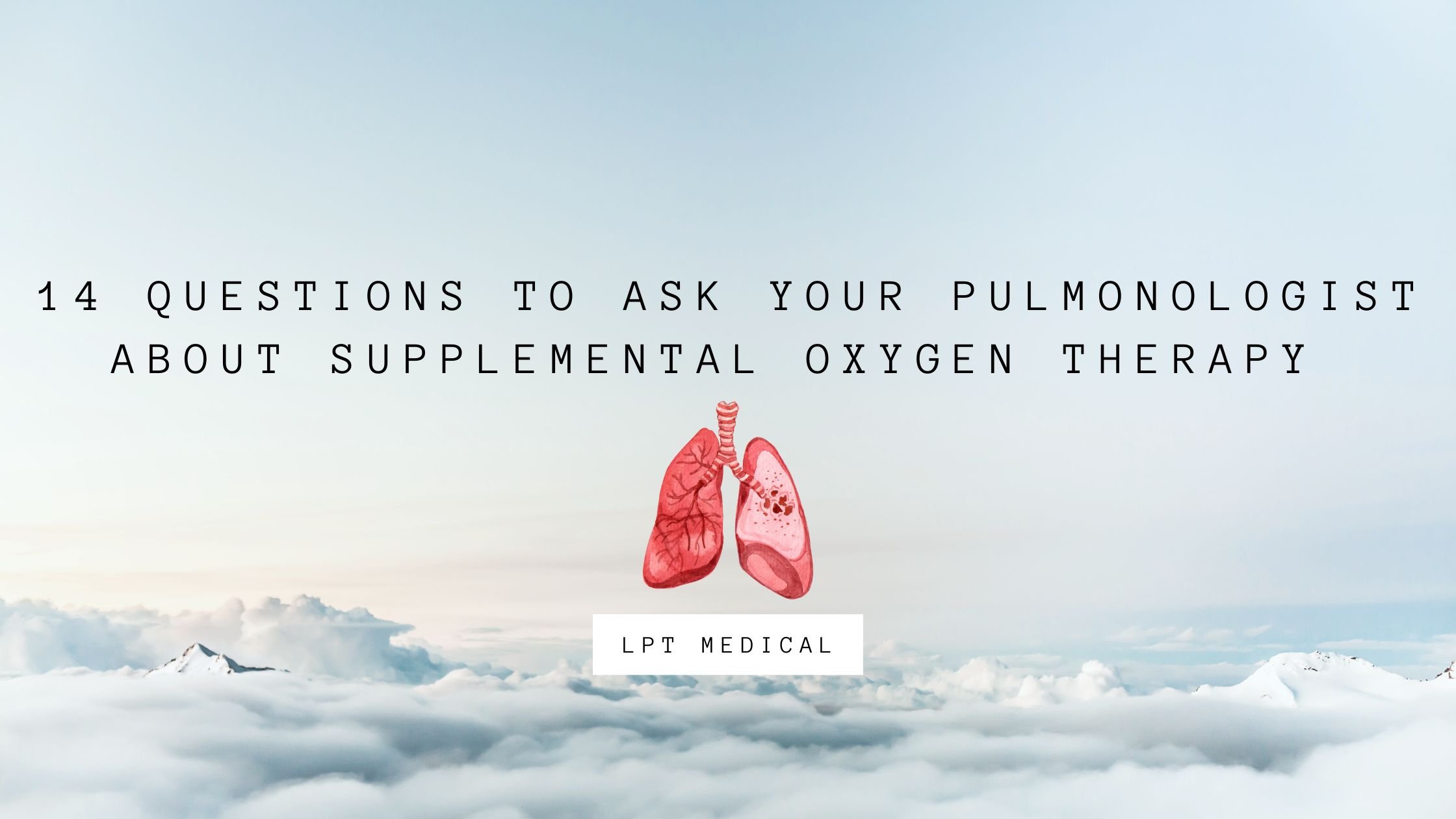
Supplemental oxygen is a type of medical therapy used to treat chronic lung conditions like cystic fibrosis, pulmonary fibrosis, and COPD. The aim of supplemental oxygen is to maintain a patient’s blood oxygen levels which are vital for systemic health. Every organ in the body requires oxygen in order to function properly, so using supplemental oxygen as it’s advised by your doctor can provide you with immense short- and long-term benefits.
Despite how important supplemental oxygen is for respiratory patients, receiving a prescription for oxygen therapy can be a scary experience. You likely have a lot of thoughts and concerns running through your mind and you’re likely overwhelmed by the prospect of being connected to an oxygen delivery device. While these concerns are certainly justified, it’s important to take a step back and begin to clarify your concerns with your doctor. Chances are, as you learn more about oxygen therapy and become more experienced with using it, many of your concerns will begin to disappear.
To help you organize your thoughts, we’re going to be discussing 14 questions you should ask your pulmonologist about supplemental oxygen therapy. Feel free to either print out this article or take notes so that you know exactly what to ask your doctor during your next visit. If you enjoy this article and you’re looking for more information, be sure to read through our post titled “16 Questions You Should Ask Your Doctor About COPD.”
1.) Is Oxygen a Necessity or a Suggestion?
Chances are, you or someone that you know has fallen back on a prescription at some point. Either you never make it to the pharmacy to pick up your medication or you simply stop using the medication for one reason or another. This Harvard Medical report states that many people either forget to use their medication, or they never fill it due to high copayments. So, naturally, you might wonder whether or not your oxygen therapy prescription will follow a similar trend. As a general rule of thumb, you should take what your doctor says seriously, because it’s unlikely that he/she would make you go out of your way or spend extra money on something that isn’t necessary. However, it doesn’t hurt to address these concerns so that your doctor can clarify the rationale behind your oxygen prescription.

2.) What are the Benefits of Oxygen Therapy?
The second thing you should ask your pulmonary doctor about are the benefits you can expect to reap from using supplemental oxygen. The air around us contains about 21% oxygen, but for someone with impaired lung function, this is not always enough for them to sustain their blood oxygen levels. The goal of oxygen therapy is to provide the lungs with a higher concentration of oxygen in order to reduce the load on the lungs. You may experience additional benefits from using supplemental oxygen based on the severity of your disease. Be sure to ask your doctor about this.

3.) What is My Flow Rate?
Your flow rate determines the amount of oxygen that you will be receiving when you put on the nasal cannula. It’s imperative that you know the exact amount of oxygen that you should be receiving because inhaling too much oxygen can lead to a condition called oxygen toxicity. This condition results in dizziness, fatigue, nausea, and eventual lung damage. Conversely, receiving too little oxygen will not provide you with the full benefits of supplemental oxygen.

Oxygen flow is measured using one of two different measurements. Pulse dose oxygen devices are measured in milliliters per minute (ml/min) and continuous flow oxygen devices are measured in liters per minute (LPM). The amount of oxygen that you’re prescribed will be based on the severity of your respiratory impairment, but generally speaking, most people need less than 2 LPM of oxygen.
4.) How Many Hours a Day Should I Use Oxygen?
Knowing how long you should be using oxygen is just as important as knowing your oxygen flow setting. If you’re using oxygen inconsistently, you might see a lot of your respiratory symptoms start to return. Long-term oxygen therapy is usually done for at least several hours a day, and your doctor will work with you to determine the best time to use it. If your doctor prescribes you with 24/7 oxygen, then you should discuss with your doctor about using an oxygen concentrator which doesn’t need to be refilled constantly like oxygen tanks or liquid oxygen tanks.

5.) What Type of Oxygen Device Should I Buy?
You might be surprised to find out how many oxygen devices there are on the market. You’ll have a whole host of options to choose from including traditional oxygen tanks, liquid oxygen tanks, stationary oxygen concentrators, and portable oxygen concentrators. But as someone who’s new to supplemental oxygen, you likely don’t know where to even begin with choosing one of these. Your doctor will likely have some information for you regarding which oxygen devices you should avoid and which ones you should consider.

It’s important to be careful when you’re purchasing an oxygen device. You may encounter companies that try to sell you oxygen without a prescription or that boasts prices that are significantly lower than any other company. However, these are most likely scams. Before making any decisions, be sure to research the company that you’re buying from to make sure that their products are reliable and that they follow all laws and regulations. For more information about how the U.S. Food and Drug Administration (FDA) regulates oxygen, please visit this page.
If you need a quick reference the ARYA Airtivo Max is a pulse flow portable oxygen concentrator that only weights 4.2 pounds, and has pulse flow operational setting from 1 through 6. This is a best selling oxygen device. It is very popular among oxygen users that live active lifestyles. The battery powered device are great for travel and everyday activities!
6.) Is it Okay to Adjust My Flow Rate Depending on How I’m Feeling?
If you have a chronic respiratory condition like COPD or pulmonary fibrosis, it’s not uncommon for symptoms to come and go. One day, you might be out of breath or lightheaded and the next you could feel perfectly fine. Because of this, you’re going to want to clarify with your doctor when it’s okay to adjust your oxygen flow and when you should not adjust your oxygen flow. The reason it’s important to ask this question is because your increase in symptoms may be due to something completely unrelated to your blood oxygen levels. In which case, increasing your oxygen flow would not benefit you.
.jpg?width=461&name=CAIRE_FreeStyle_Comfort-Nursery_10%20(1).jpg)
7.) How Can I Track My Blood Oxygen Level?
A pulse oximeter, or pulse ox device, clips onto your finger and measures the saturation of oxygen in your blood (SpO2). They are noninvasive and they work by passing rays of light through your finger to measure the amount of oxygen-carrying hemoglobin. While they aren’t the most accurate method of measuring blood oxygen levels, they are very lightweight and portable meaning you can pack one in your purse or handbag for easy access. If your doctor hasn’t already provided you with one, it’s worth mentioning it so that you have a way of monitoring your oxygen levels. To learn more about blood oxygen levels, read this post.

8.) Is Oxygen Therapy Safe?
Since oxygen is a controlled substance in the United States and requires a prescription, you may be wondering if it’s even safe to use in the first place. The answer to this question is “yes,” however, there are some things you should be aware of. Firstly, as aforementioned, using more oxygen than you’re prescribed will put you at risk of experiencing oxygen toxicity. Secondly, the safety of oxygen therapy depends heavily on the type of oxygen device you’re using.
Traditional oxygen tanks are the most dangerous because they contain compressed oxygen and they’re also heavy and bulky. Portable oxygen concentrators are the least dangerous oxygen device because they are lightweight and do not contain compressed oxygen. Oxygen is an “oxidizer” meaning it increases the flammability of anything it comes into contact with. So, you should never smoke near your oxygen device or use it near an open flame.
9.) Should I Be On Oxygen When I Sleep?
If your doctor prescribes you with 24/7 oxygen, you might be wondering how this will work when you’re sleeping. Your breathing rate and depth fluctuate a lot when you sleep so the amount of oxygen that you’re receiving could change throughout the night. This is why it might be worth it to invest in a portable oxygen concentrator like the Caire FreeStyle Comfort or the Inogen One G5. Unlike oxygen tanks, these devices closely monitor your breathing as you sleep and adjust your intake accordingly.

If you have a sleep disorder like obstructive sleep apnea (OSA), you may need to use your PAP device and your oxygen device at the same time while you sleep. PAP therapy is of critical importance for OSA patients because it keeps their airways open as they sleep allowing them to get restful sleep without interruptions. To use your CPAP device with your oxygen device, you need to be using a continuous flow oxygen unit and have a bleed in adapter that connects the tubing together. The Respironics SImplyGo is the perfect portable oxygen concentrator for CPAP compatibility.
10.) How Can I Eliminate Discomfort While on Supplemental Oxygen?
For the most part, oxygen therapy shouldn’t cause any discomfort. However, some people encounter issues with the nasal cannula such as irritation inside the nose due to dryness or some other reason. Humidifiers can actually be attached to your oxygen device to help ease the discomfort and there are a number of other accessories you can purchase that make the process more comfortable. We actually wrote a guide discussing some of the issues oxygen patients face and how to solve them. Check it out here.

11.) Can I Exercise on Oxygen?
Consistent moderate exercise is crucial for pulmonary wellness. Not only does exercise improve the strength of your lungs but it also increases the efficiency that your heart pumps oxygen throughout your body. So, just because you’ve started oxygen therapy does not mean that you should stop exercising. Check out this post which has some tips for exercising with an oxygen device and be sure to ask your doctor for advice as well.

12.) What Do I Need to Know to Travel With Oxygen?
Traveling around the world with COPD is much easier than ever before thanks to portable oxygen concentrators. The Federal Aviation Administration (FAA), the organization that oversees all commercial flights in the United States has approved most POCs for in-flight use. However, to make sure you have everything you need, you should contact your airline at least 48 hours before your flight. Most airlines require that you have at least one and a half times as much battery life as the duration of the flight. This will make up for any delays that may occur before and after you land.

13.) How Do I Maintain My Oxygen Device?
With the advent of the novel coronavirus, cleaning has taken on a whole new meaning. No matter what type of oxygen device you decide to use, you should take the time to clean it regularly. What’s more, nasal cannulae and oxygen tubing should be replaced every two weeks to ensure it’s clean and ready for use. If you purchase a portable oxygen concentrator you should remove the particle filters each week and wash them off. This will ensure that the air you’re inhaling through the cannula is clean and free of dust and dirt.

14.) Will I Need to Get Retested For Supplemental Oxygen?
Doctors typically use arterial blood gas analysis, pulse oximetry, and various lung tests to determine your need for supplemental oxygen. However, you may need to take on-going tests to help your doctor determine whether or not you still need oxygen in the future. Ask your doctor what kind of tests you will need to take and how often you should come in for a checkup once you are using your oxygen device. Some patients find it helpful to get a certificate of medical necessity which can help you file insurance claims and apply for benefits.

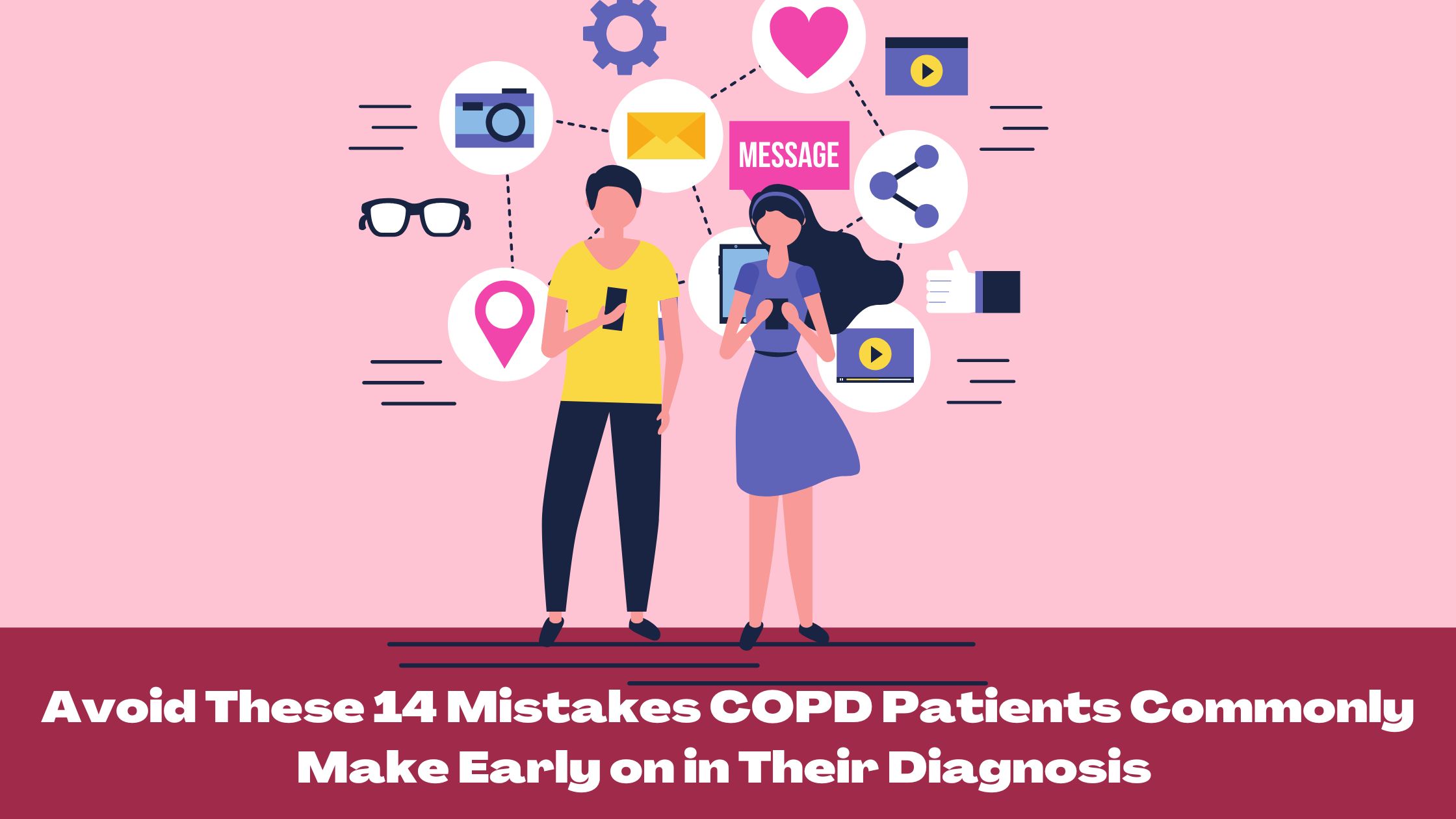
Are you newly diagnosed with COPD? Do not make these common mistakes, read this post to learn about what and how to avoid complications early on!
Getting diagnosed with COPD can seem overwhelming, especially when it catches you by surprise. It's often even more overwhelming to get used to all the new treatments, medications and lifestyle changes required to keep your lungs healthy, especially while you're still trying to come to terms with your diagnosis.
As a chronic disease, COPD requires constant work and careful decision-making to keep the symptoms under control. Because of this, it's no surprise that new COPD patients make a variety of mistakes that can affect their health and well-being.
Between making changes to your diet, exercise routine, medications, and many other activities of daily life, there are a lot of opportunities for error. As you adjust to life with COPD, it's important to avoid making mistakes that could serious consequences for your health, or at least catch and correct them early on.

That's why you should learn and pay attention to the mistakes that other new COPD patients tend to make. It helps you learn more about your disease, what to look out for, and how to keep your body and lungs as healthy as possible.
In this guide, we're going to help you avoid common pitfalls by showing you the mistakes that new COPD patients frequently make. Along with each mistake we've provided solutions so you'll know how to avoid that mistake and do the correct thing instead.
By taking the time to learn from others' mistakes, you'll be much less likely to encounter the same problems yourself. In the next sections, we'll give you all the information you need to avoid falling into the same pitfalls that other patients end up in.
However, it's important to remember that mistakes and struggles are inevitable as you adjust to the many changes that getting diagnosed with COPD brings. But if you educate yourself now, you can easily correct these mistakes and avoid serious problems that could permanently affect your health.
A major part of keeping your lungs healthy and keeping your COPD under control is learning everything you can about your disease. It also means being an active, motivated participant in your treatment and knowing what you shouldn't do just as much as the things you should.
The Mistake: Not Using Your Inhaler Correctly
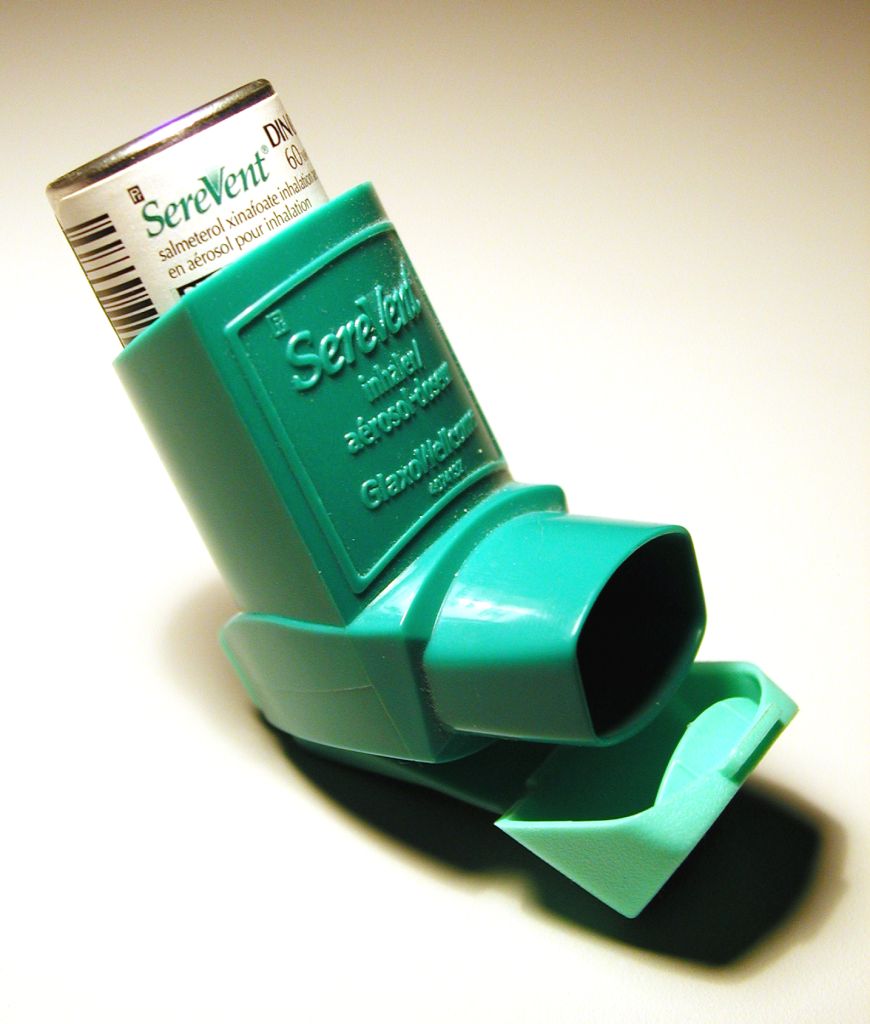
While inhalers may seem like fairly straightforward devices, a surprisingly large percentage of patients don't use their inhaler correctly. This happens to many patients who never learned the proper technique or forgot the correct steps over time. Other patients get too complacent or careless and skip steps to save time, not realizing each step is important.
Most of the mistakes patients make with their inhalers have to do with preparing the inhaler and using the right breathing technique. This is a serious problem, since these steps are necessary for getting the medication into the lungs where it needs to work.
Unfortunately, many doctors don't do their due diligence in training their patients to use their inhalers correctly. Even though doctors are supposed to check patients' inhaler technique at every appointment, it is often rare for them to take the time to do it properly in practice.
It doesn't help that many doctors don't even know proper inhaler technique themselves, meaning they can't give their patients adequate instruction. Luckily, the medical community has recently acknowledged the extent of this problem and is making efforts to raise awareness among doctors to correct it.
Here are some of the common mistakes to look out for:
- Not shaking the inhaler before each puff
- Not exhaling fully before using the inhaler
- Not holding the inhaler in the correct position
- Not timing your inhale with the spray from the inhaler
- Not inhaling deeply enough
- Not inhaling slowly enough
- Not holding your breath after inhaling the medication
- Inhaling through your nose instead of your mouth
Making any of these mistakes can result in getting too little medication or none of the medication that you need. This can be very dangerous when you suffer from COPD, because you need your full dose to prevent serious symptoms and exacerbations.
The Solution: Learning Proper Inhaler Technique
Because all inhalers are different, the only way to ensure that you're using your inhaler correctly is to re-read your inhaler's instructions and re-evaluate your technique. That means going over all the steps and guidelines in the information packet that comes with your medication.
This is important whether you're a newly diagnosed COPD patient or you have been treating your disease for some time. No matter how well you think you know it, it never hurts to double check.
You should also take your inhaler with you to every doctor's appointment so you can show your doctor exactly how you usually use it. That way, your doctor can identify any mistakes you make and show you the correct technique.
Every time you use your inhaler, make sure you follow every step and don't rush or cut any corners. Don't forget to shake or prime your inhaler if needed, and always remember to exhale before using it.
Timing your inhale with the spray from your inhaler is extremely important, but also difficult, which is why this step tends to cause patients the most problems. It may take some practice to time correctly, and you may need to use a spacer attached to the mouthpiece to help you do it right.

Studies show that when you inhale too early, then you only get about 35% of the full dose you're supposed to get. If you inhale to late, however, you end up spraying the medication in your mouth and throat instead of inhaling it into your lungs. This makes the medication ineffective and puts your lungs at risk.
To make sure you inhale at the right time and get the full dose, start breathing in slowly just before you press the button to release the medicine. Continue inhaling slowly and deeply as you feel the spray to draw the medication all the way into your lungs.
Remember that inhaling the medication isn't the last step; you still have to hold your breath to keep it in your lungs. Most recommend holding your breath for about ten seconds, then you can slowly and gently exhale.
If you are using an inhaler that contains steroid medications, then you still aren't done quite yet. To prevent the medication from drying out your mouth and throat, you need to rinse your mouth out with water before you're done.
If you ever have any questions or concerns about using your inhaler, don't hesitate to talk to your doctor. You can also ask your pharmacist to demonstrate how to use your inhaler(s) or to answer any other questions you have.
You can also find tips and information online for a variety of different types of inhalers. However, this should never be a replacement for the information you can get from your doctor and prescription information.
The Mistake: Not Knowing When to Take Which Medications

Nearly all COPD patients take two major types of medications: maintenance medications and quick-relief medications (also known as rescue medications). Both medications are delivered via inhaler, which is why patients sometimes get them confused.
This can be dangerous, because you need to use both medications correctly in order to treat your COPD effectively and keep your symptoms under control. Mixing up the two medications or forgetting to take them at the right time could make your symptoms worse or cause you to have a serious COPD exacerbation.
Other medications can be confusing to use, too, especially if you are only supposed to take them on certain occasions. For example, many doctors prescribe oral antibiotics and steroid medications for their patients to use as needed to prevent and treat COPD exacerbations.
The Solution: Following Your COPD Action Plan

Every COPD patient should get a COPD action plan from their doctor shortly after getting diagnosed. If you haven't received one yet, ask your doctor to work one up for you, as studies show that they help patients better manage COPD at home.
A COPD Action plan acts like a set of guidelines for you to follow based on how bad your symptoms are from day to day. For example, most action plans have three major “zones” that correspond to the severity of your symptoms; the first zone is for when you are feeling fine, the second for mild flare-ups, and the third for more serious symptoms and complications.
Click here to see what a sample COPD action plan looks like.
Every day, you should evaluate your symptoms to determine what “zone” to look at. Then, you simply follow the instructions in that zone for what medications and what doses you should take. Most action plans also include guidelines to let you know when its safe to exert yourself and at what point you should call your doctor when your symptoms flare up.
Because most COPD patients have several different medications to keep track of, it's extremely important to take the time to learn all of the important facts about each of your medications. That includes learning their full names, what they look like, and what you are supposed to use them for.
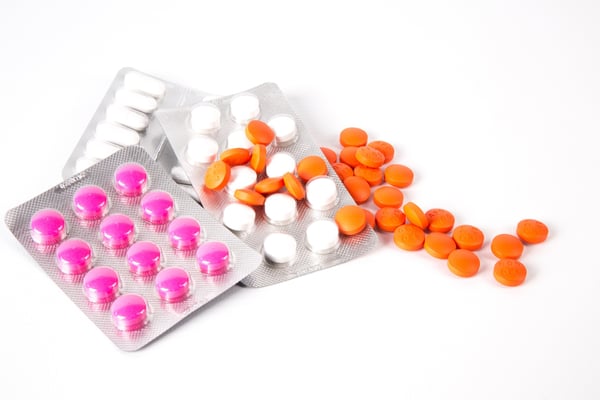
This ensures that you can match your medications with the instructions in your COPD action plan and use them exactly as your doctor directs you to. It also makes you much less likely to mix your medications up, take them at the wrong time, or forget about them altogether.
You should also bring a complete list of your medications with you anytime you go to the hospital or doctor's office. This will make it easier for the medical professionals who look after you to ensure you get the best treatment possible.
It is also important to bring this list with you whenever you travel, especially if you will be taking your medication with you on a bus, train, or airplane. You may need to present your list of medications to travel personnel, and it will come in handy if you need medical attention while you're away from your regular doctor.
The Mistake: Not Quitting Smoking
One of the most important things you can do for your health when you have COPD is to stop smoking. Unfortunately, too many patients believe it's too late for them to quit and continue to smoke even after their COPD diagnosis.
The thing is, even after you've developed COPD, there are still enormous benefits to quitting. In fact, having COPD makes it even more imperative to quit, since continuing to smoke can cause your disease to rapidly get worse.
COPD is a result of reduced lung function, often due to smoking, but continuing to smoke after COPD has set in will only harm your lungs even more. Smoking causes you to lose lung function at an accelerated rate compared to COPD patients who are able to quit.
Reduced lung function will make it even more difficult to breathe, do physical activities, and can significantly reduce your quality of life. If you quit, however, you may even see an improvement in your COPD symptoms, and you can enjoy the lung function and lifestyle you have for much longer.
While quitting smoking cannot reverse the damage that's already been done to your lungs, it can slow down the damage from getting worse. It can also increase your lifespan and reduce the number of exacerbations, flare-ups, and hospitalizations you experience because of your COPD.
Don't forget that quitting can reduce your chances for a variety of other serious health problems as well. For example, you can significantly reduce your risk for heart disease, lung cancer, and stroke if you successfully quit smoking.
The Solution: Making the Decision to Quit

It's important for every COPD patient to understand that it is never too late to quit smoking. Whether you are 25 or 65, you can improve your health and possibly even your lifespan by making the decision to quit today.
It's not an easy decision to make, and it's even harder to actually follow through. However, every year at least 350,000 smokers in the US are able to quit completely, and there's no reason why you can't be one of them.
Although quitting is hard, there are many things you can do to increase your chances of success. For example, using a quit-smoking medication or joining a quit-smoking program can make your quit attempt more likely to succeed.
When you make the decision to quit, remember that you are not alone and there are many ways to get support. First, you should talk to your doctor to see what kinds of medications and support programs are available to help you.
You may want to try nicotine replacement therapy, which is proven to increase smoking cessation rates. There are many different forms available, too, including nicotine gum, skin patches, tablets, oral sprays, and inhalers.
For more information on how to quit smoking, visit the CDC's website for a variety of helpful links and resources. You can also find helpful quit-smoking tips from the American Lung Association's website or from smokefree.gov.
Don't be discouraged if your first, second, or even tenth attempt to quit smoking ends up failing. It takes most smokers at least six attempts to quit smoking, and sometimes up to twenty, before they are able to quit long-term.
As the CDC puts it, “Quitting smoking is a marathon, not a sprint,” and you have to be in it for the long term if you truly want to live smoke free. Even though it is a long and difficult process, it is more than worth the benefits you will receive through improved health, reduced COPD symptoms, and your overall quality of life.
The Mistake: Not Eating a COPD-Healthy Diet

In order to keep your lungs and the rest of your body strong, you need to feed them the nutrients they need. That means eating a healthy, balanced diet every day to give your body fuel to work as efficiently as possible.
Unfortunately, many new patients find that controlling their weight and eating healthy foods is difficult with COPD. The disease can make it difficult to exercise and prepare healthy meals, both of which are vital for a healthy lifestyle.
COPD can make it difficult to lose weight and difficult to gain weight, which is why some patients struggle with being underweight while others struggle with obesity. Either situation is bad for your health and can make it more difficult to breathe.
If you get too few calories and nutrients, then your lungs won't have enough fuel to keep up with your body's needs. However, eating too much and gaining weight puts extra strain on your muscles and lungs, which can also make your COPD symptoms worse.

Also, because COPD makes your lungs less efficient, it means they have to work harder than healthy lungs in order to get enough oxygen to your body. This means that COPD patients need more calories and more nutrients to fuel the needs of their lungs and breathing muscles.
Another danger that many new COPD are unaware of is eating a diet that's too high in carbohydrates. Carbohydrates actually put extra strain on your lungs when digested, because they release large amounts of CO2 that then has to be processed through your lungs.
The Solution: Eating Whole Foods and Balanced Meals

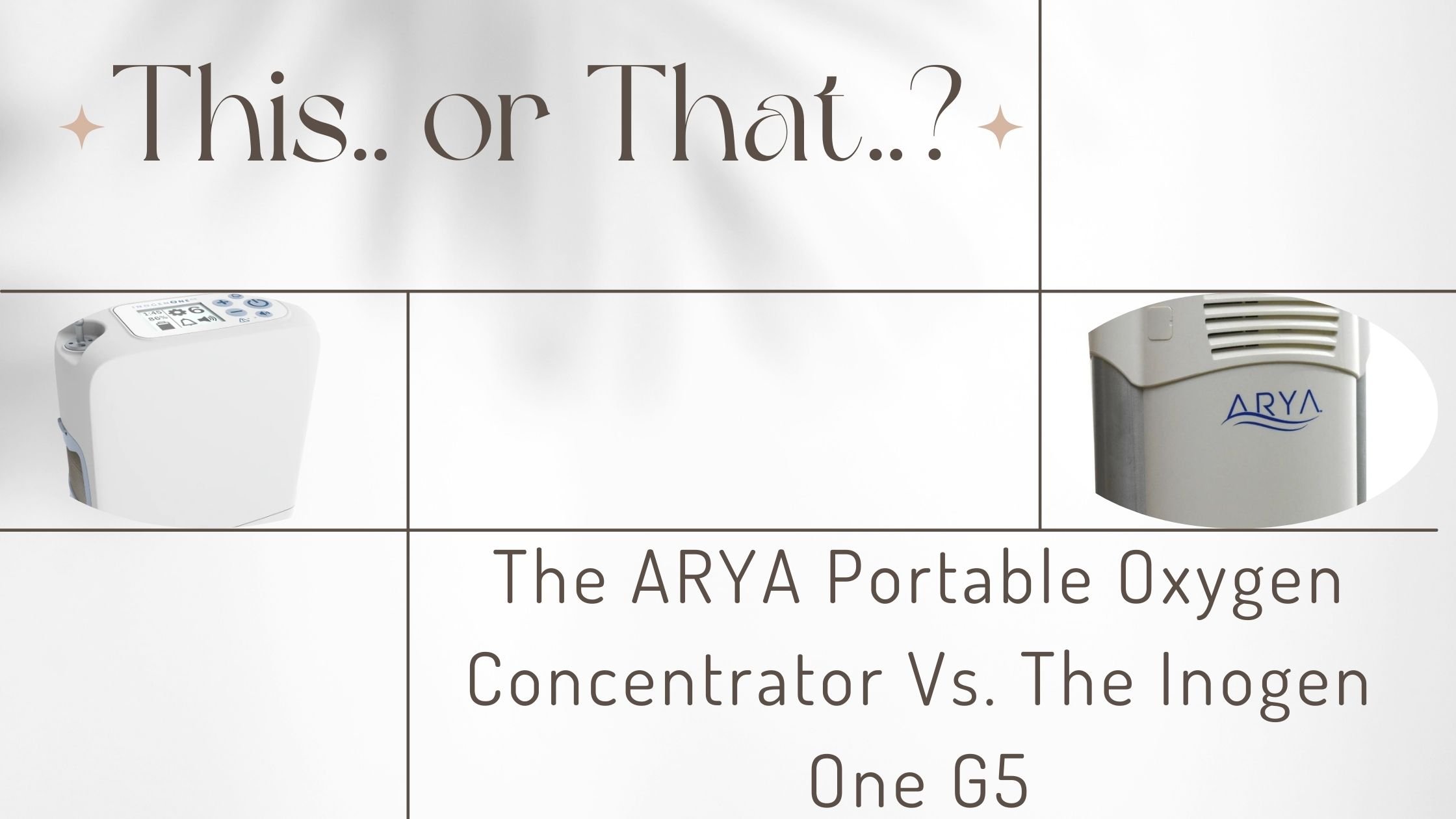
We are offering a new product: the ARYA Portable Oxygen Concentrator. We’re excited to offer this new pulse flow unit because it affords oxygen patients another great option when it comes to customizing their oxygen therapy experience.
But as you likely know, we try to avoid pushing out older products if there are still people out there who benefit from them. So, even with this new release, you’ll be happy to know that you will still have access to all your favorite oxygen concentrator brands like AirSep, O2 Concepts, Respironics, and more.
However, as usual, we want to provide you with all the resources you need to make an educated decision about your oxygen usage. There are hundreds of oxygen delivery machines out there, but many of them are either obsolete or they don’t provide patients with the benefits they want and need. It would be way too overwhelming to talk about every oxygen concentrator in one post, so we decided to break them up and compare two concentrators side-by-side.
In this post, we’re going to compare the new ARYA and the Inogen One G5. If you have any questions, feel free to leave a comment with your phone number or email address so we can reach out to you.
ARYA Portable Oxygen Concentrator Overview
ARYA is the top oxygen concentrator manufacturer in the world.

The ARYA portable Oxygen Concentrator is currently the leading pulse flow portable oxygen concentrator offered by the company. Despite only being on the market for just over a year, the ARYA has already made a name for itself by offering impeccable oxygen output, a lightweight design, and several unique features that aren’t offered by any other portable oxygen concentrator.
Inogen One G5 Overview
Inogen is — without a doubt — one of the most trusted and recognizable names in oxygen therapy. Inogen makes more portable oxygen concentrators than most companies out there, but they never lack when it comes to quality either. In fact, most oxygen patients and oxygen retailers eagerly await the release of new Inogen products, because they know they will break boundaries in terms of battery life, weight, and oxygen output.
The Inogen One G5 was released in the summer of 2019 and it’s the latest POC produced by the company. With outstanding battery life and lightweight design, it’s our pick for one of the best portable oxygen concentrators of 2020. Accompanying the release of the G5 were a whole host of accessories that allow you to customize your experience to your liking.
Maximum Oxygen Output
Maximum oxygen output is the total amount of oxygen a concentrator can put out in a given period of time. Many people who are new to oxygen therapy are confused by this because not all oxygen concentrators are measured the same. Continuous flow concentrators like the Respironics SimplyGo are measured in liters per minute (LPM) while pulse flow concentrators like the G5 and ARYA are measured in milliliters per minute (ml/min). The higher pulse flow setting you use, the more oxygen it will put out with each “bolus.”
Both the G5 and the ARYA have a high oxygen output for their class. The G5 has a maximum output of 1,260 ml/min with flow settings 1 through 6 and the ARYA has a total output of 1,050 ml/min with flow settings 1 through 5. Compared to other pulse flow concentrators, both these units provide a high oxygen output that’s more than enough oxygen for the majority of oxygen users.
Weight
The main reason for purchasing a pulse flow POC over a continuous flow POC is weight. While continuous flow POCs can be taken pretty much anywhere, they’re typically too heavy to carry on your shoulder or back. Instead, you’ll have to use a carrying cart which can be a huge pain. Pulse flow units, on the other hand, are light enough that you can use a shoulder strap or even carry it in your hands.
There isn’t a huge difference between the weight of the G5 and the weight of the ARYA. With the smaller 8-cell battery, the G5 weighs about 4.7 pounds and the ARYA weighs about 5 pounds. Side-by-side you probably won’t notice a difference between the two, however, if you have back pain the Inogen One G5 may be the way to go. Either way, lightweight portable oxygen concentrators are the standard, so don’t settle for anything less!
Battery Life
When you look back at the past decade of portable oxygen concentrators, it’s pretty amazing to see how far batteries have come. Several years ago, POC batteries would only afford you a couple of hours of freedom before you had to go home and recharge them. In many cases, it was better to use an oxygen tank because, even if they were bulkier, they enabled you to be out of the house for longer.
However, in this day and age, POC batteries have far exceeded our expectations. With the G5 double battery, you can run your device for 13 hours on a setting of 1 and a ARYA with the 16-cell battery can run for an impressive 16 hours without charging. This is more than enough battery life to be able to stay out all-day while living life on your own terms.
For most oxygen users, battery life is a top priority when choosing an oxygen concentrator. If you have a long-lasting battery, you’ll be able to see more and do more. For example, if you want to take a trip around the world, you don’t want to have to constantly stop what you’re doing to go back to your hotel in order to charge your portable oxygen concentrator. Even people with more severe COPD want longer-lasting batteries, which both the G5 and ARYA can offer.
Design
The ARYA and Inogen One G5 are both very well-designed portable oxygen machines. They have a solid outer shell which will help protect the internal components from damage and they’re compact enough that you can hold them at your side comfortably. The G5 was more based on the Inogen One G4’s look while the ARYA has a design similar to the Inogen One G3. Either way, it’s simply a matter of preference as to which one you like more.

One unique feature about the ARYA is its ergonomic shape. The expert oxygen manufacturers at ARYA noticed that there was no POC on the market with a shape that matched the natural curve of your body. So, with the ARYA, they added a slight curve to the device. When you’re walking around enjoying your day, your concentrator won’t be sliding around and causing a disturbance.
Another design feature you can find on both these concentrators is the easy-to-use interface. Rather than having a control panel with tons of buttons, the G5 and ARYA opt for a minimalist design. On the ARYA, there are only three buttons: two for the flow setting controls and one for the power. On the G5, there are five buttons. They control the oxygen flow setting, power, and visual and audio notifications.
Additional Features
Despite being very easy to use, these portable oxygen concentrators are some of the most feature-heavy on the market. The greatest part of all is that you’ll never be forced into using anything that you don’t want to use.
One of the additional features of the Inogen One G5 is a mobile application called the Inogen Connect. This was implemented with the release of the G4 and it was brought back due to popular demand. Essentially, it allows you to connect your POC to your smartphone or tablet via Bluetooth. Once that’s done, you’ll be able to view up-to-date information about your device like its battery life, column status, and oxygen purity status. You can even view your G5 user manual and troubleshooting information.
An additional feature on the ARYA is the ARYAView™ Telehealth Technology. This is similar to the Inogen Connect in that it shows you critical information about the status of your portable oxygen concentrator, however, it has some additional features that makes the ARAY one of the most advanced POCs ever created.
“Telehealth technology” is a rather new term in the medical field, but it refers to the use of technology to connect patients and clinicians over long distances. ARYAView™ connects to your POC just like the Inogen Connect, but in addition to providing information about your device, it’s securely connected directly to your oxygen supplier allowing them to remotely monitor and troubleshoot your device on command.

While telehealth technology still has a long way to come in terms of accessibility, it shows how far portable oxygen concentrators have come and where they could potentially go in the future. If you’re curious about testing this out, it may be a great reason to choose the ARYA over the Inogen One G5. Just remember that these are additional features, so if you don’t want to fuss with them then you don’t have to!
The Best Candidate for the ARYA Portable Oxygen Concentrator
Although ARYA may not be the most recognizable brand by the average consumer, the impact they’ve had on oxygen therapy and oxygen delivery is undeniable. They proudly provide military-grade oxygen supplies for the armed forces and they gladly offer the same quality products for oxygen patients back home. TheARYA Portable Oxygen Concentrator is just the latest pulse flow portable oxygen concentrator in their line of impeccable oxygen machines.
TheARYA excels in most aspects offering a high oxygen output, lightweight design, and the innovative ARYAView™ telehealth technology which allows you to get real-time troubleshooting assistance on the fly. The ARYA is recommended to anyone who needs 1,050 ml/min or less of oxygen and anyone who wants to live life on their own terms without being held back by a bulky oxygen device.
The Best Candidate for the Inogen One G5
Ever since its inception in the early 2000s, Inogen has been dead set on making oxygen more accessible and easy to use for oxygen patients all around the world. With each product release, they’ve accomplished this with flying colors. In fact, Inogen concentrators are so advanced that oxygen patients continue to use older generations of their concentrators many years after their release.
Since its release last summer, the Inogen One G5 has often been labeled “the best oxygen concentrator” due to having the highest oxygen output of any pulse flow concentrator, in addition to maintaining many of the other features patients love in their POC such as a lightweight design and long-lasting battery life. We recommend the Inogen One G5 to anyone who requires 1,260 ml/min of oxygen or less (flow setting of 6 or less).
Conclusion
There are many great portable oxygen concentrators for sale, but the ARYA and Inogen One G5 are just two of the latest and greatest. Whether you’ve just started your search for a POC or you’ve already narrowed down your choices, don’t hesitate to get in touch with one of our respiratory specialists to seal the deal. We’ll make sure you’re getting the oxygen machine that you want and need and we can answer any questions that you may have.
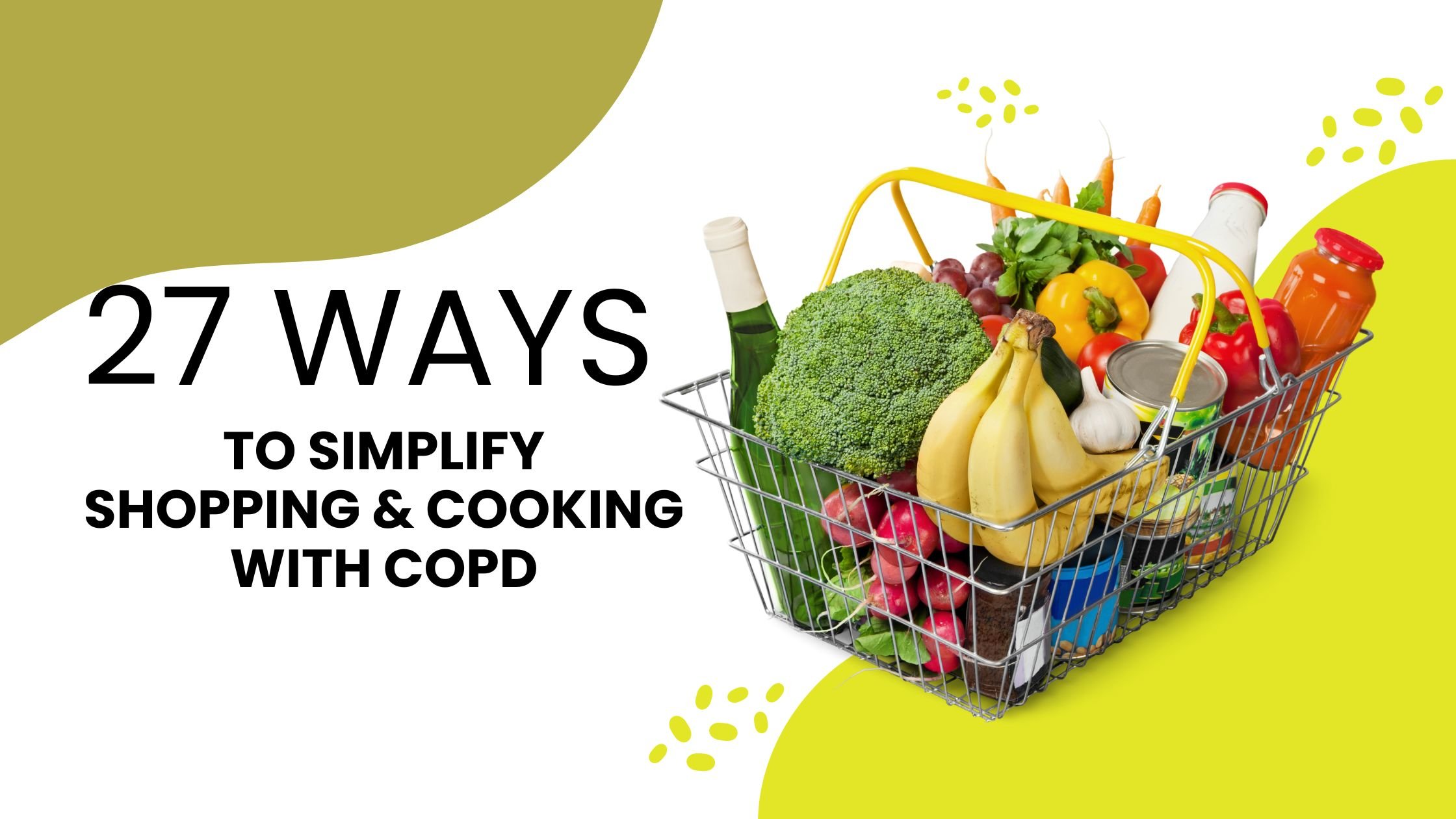
Breathlessness on its own can make walking, bending, kneeling, and other physical tasks exhausting and uncomfortable. And then when you add other COPD symptoms into the mix, like coughing, wheezing, muscle weakness, and fatigue, daily responsibilities like cooking can sometimes seem like too much to handle.
Because of this, conserving energy is often a necessity for COPD patients, especially when they experience flare-ups, exacerbations, or begin to lose their physical mobility as the disease progresses. That's when it's time to start looking into effort- and time-saving tools and techniques and ways to simplify and streamline daily tasks.
Nowhere is this more important than when it comes to food and cooking. Diet is a vitally important part of staying healthy with COPD, but it's also easy to neglect when you're not feeling well. Continuing to purchase and prepare healthy, whole meals can get extremely difficult when you're restricted by limited strength and energy every day.
That's why, in this article, we're going to help you find ways to continue shopping, cooking, and preparing healthy meals in spite of the difficulties that come along with having COPD. We'll show you how planning your meals and using a variety of practical tools and techniques can significantly reduce the amount of time and effort you have to spend shopping and preparing home-made food.
We'll teach you some practical shortcuts for meal planning and preparation, show you how to save energy cooking and cleaning, and introduce you to food-related products and services designed to help people with limited mobility. So without further ado, continue reading to learn about 27 useful tools and techniques you can use to simplify grocery shopping, meal planning, and cooking with COPD.
Tools & Techniques for Easy Meal Planning

Planning ahead is the cornerstone of efficient cooking. Without a weekly meal plan, shopping and preparing meals is much more stressful and you're more likely to just give up and opt for processed or fast foods.
On the other hand, putting a little extra effort into scheduling your meals helps to streamline the entire shopping, food preparation, and cooking processes. This section will give you a variety of practical tips to help you successfully build the habit of planning your meals ahead for every week.
Writing Your Meal Plan

It might seem like a pain, but taking the time once a week to sit and write down every meal you're going to eat is guaranteed to save you time and effort in the long run. It streamlines shopping, simplifies cooking, and helps you fit healthy, homemade meals into your busy week.
When planning your meals, make sure you consider how much time you have each day and do your best to be realistic. Always have a couple of quick-fix or pre-made meals in mind as a contingency plan for when your schedule changes or you just don't have enough time to cook.
Once you get into the habit of meal planning, you'll start to notice a myriad of benefits. It will remove the stress of wondering “what can I make for dinner?” every evening, and saves time when it's time to make your shopping list.
If you follow a meal plan, you won't find yourself without the ingredients you need to make dinner, because you'll know exactly what groceries you need and you can shop for all your meals for the week ahead of time. By making things as easy for yourself as possible, it will also be easier to stay committed to making home-cooked meals, and easier to resist unhealthy, lazy options like fast food.
Here are some additional tips for weekly meal planning:
-
Record your meals in a weekly schedule or calendar so you can easily remember and keep track of your meal plan
-
Plan the most difficult or time-consuming meals for days when you have fewer activities and are less likely to breathless or worn out.
-
Avoid having to cook every single day by planning for leftovers or heating up make-ahead meals (prepared ahead of time).
-
Plan no-cook meals like sandwiches and salads for busy days or use them as a fall-back for when your COPD symptoms act up.
-
Plan slow cooker meals for days when you don't have time for a lot of preparation or cooking. Simply throw the ingredients in the pot in the morning, and you'll have a hot, delicious meal waiting for you at the end of the day.
- Make your shopping list while you're planning your meals for the week. That way, you can add all the ingredients you need for your meals to your shopping list and take care of two birds with one stone.
Keep Track of Recipes
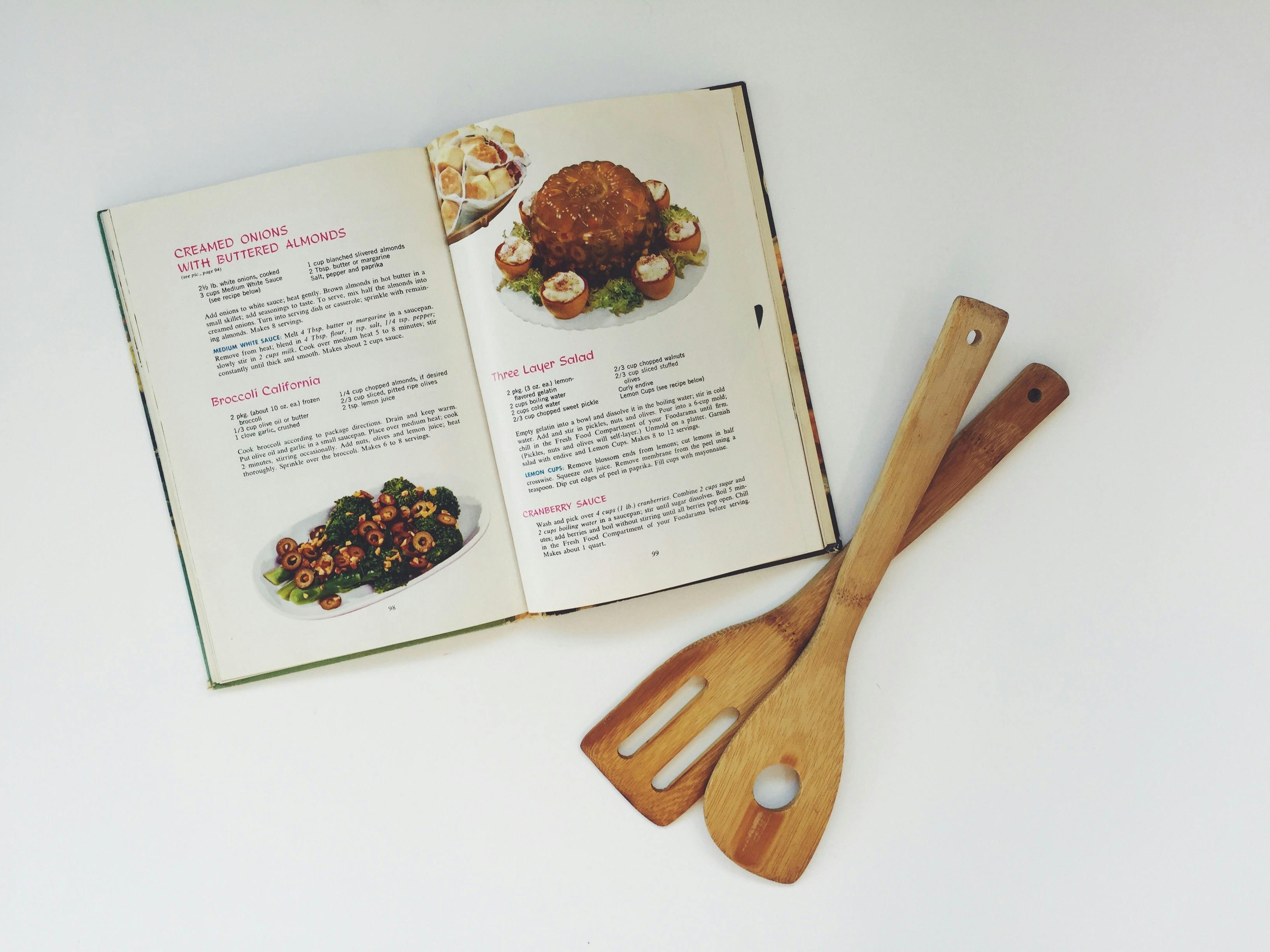
It's hard to plan your meals if you don't know what to make. That's why building up a collection of your favorite recipes can really help you out.
If you often have trouble thinking of what to make or you're getting bored with your usual meals, it might be time to go shopping for a new cookbook or two. Look for cookbooks with practical recipes that appeal to your tastes and aren't too complex for you to make. Mark your favorite recipes with post-it notes or copy them into a separate notebook so you can easily find and flip through the best recipes.
It's also a good idea to spend some time searching online for recipes and recipe websites that you like. Look for themed recipe blogs that focus on types of food you enjoy and bookmark any sites or single recipes that you want to keep.
You can also use a note-taking and bookmark-organizing application like Evernote to save and keep track of any recipes you find on the web. That way, you can sort your recipes by category and easily track down any recipe you've saved.
Plan Around Themes

Assigning a theme or main ingredient to different days of the week can take some of the pressure and hassle out of meal planning. It could be any theme you want; you could try taco Tuesdays, fish Fridays, soup Sundays, or casserole Mondays. Whatever you choose, it will narrow down your options and make it easier to pick out meals for the week.
But just because a day is dedicated to a particular type of meal doesn't mean you have to eat the same thing every time. Instead of preparing the same boring meal week after week, use your themed days as an excuse to try out new recipes or variations. For taco tuesdays, for example, you could try a different type of taco every week (e.g. beef tacos, fried fish tacos, veggie tacos, chicken tacos, etc.).
Tools & Techniques to Make Shopping Easier
The long, winding path through the grocery store can be exhausting if you have COPD. Luckily, there are plenty of ways to reduce the amount of time you have to spend shopping for food and supplies.
Whether you suffer from limited mobility or simply need to conserve energy when you're feeling breathless and fatigued, simplifying and streamlining your grocery trips can make a huge difference in your life. Take a look at some of the following tips and techniques for getting the groceries you need with less time, effort, and hassle.
Plan Your Route

If long grocery shopping trips leave you exhausted and breathless, then you should try to keep them as short and efficient as possible. The best way to do this is to have a complete list of everything you need before you go, organized in the order you will encounter the items at the grocery store.
As long as you know the store's general layout, planning your route ahead of time shouldn't be difficult to do. Simply do your best as you write your list to arrange the items into categories (e.g. produce, dairy, and frozen) and put them in roughly the same order as they occur in the store.
This way, you can save energy by taking the shortest path possible through the aisles while still getting everything you need. It also greatly reduces your likelihood of having to backtrack and walk all the way across the store for items you skipped over or forgot.
Shop Once

Almost nothing is more frustrating than arriving home from a grocery trip with more than you need and realizing you forgot the items that you went there for. Then, you either have to make do without, or muster up the energy to make another journey out to the store.
That's why you should never set foot in a grocery store without having a plan. Taking some time to sit down and make a list is absolutely essential for making your shopping trips efficient and worthwhile.
First, take a couple minutes to write down all the meals you have planned for the week and the ingredients you'll need to make them. Then, take a look in your fridge, freezer, and pantry to see what ingredients you have and what ingredients you'll need to get.
You should also make it a habit to check your cabinets for how much of any important food staples, like flour, herbs, rice, and canned goods that you have left. If you're running low on anything, it's in your best interest to buy more before you run out so you don't find yourself having to make a last-minute trip to the store on a later date.
Take Advantage of Local Grocery Store Pickup
 |
| Photo by Joe Goldberg |
Did you know that many grocery stores have a service where they'll pick out your groceries for you, saving you the walk through the store? It's a great way to save energy if all of the walking, lifting, and stooping that grocery shopping requires makes you feel too exhausted and breathless to shop.
Depending on the store, you can either give them a list of the items you need or directly order them online. Then, all you have to do is drive up to the store, and employees will load up all your bags in your car for you.
Get Your Groceries Delivered to Your Door

Many grocery stores also offer delivery services you can use to get your groceries brought right to your house for a fee. This allows you to get all of your shopping done without ever having to leave your home.
There are also many online stores you can use to order groceries for delivery straight to your door. Amazon Prime Pantry, for instance, has a massive selection of groceries and cooking items to choose from and you can get most of them delivered to you in just two days if you pay the annual membership fee for Amazon Prime.
Subscribe to a Local CSA

Being part of a community Supported Agriculture (CSA) program is a great way to support local agriculture and get fresh, nutritious produce during the summer and fall.
It works like this: You pay an annual membership fee that is used to support a local farm. Then, during the growing season, you will receive regular boxes of fresh fruits and vegetables grown on that farm—your “share” of the harvest in return for your investment.
Most of the time, you can pick up your box weekly at one of a few pickup centers in your city. Most CSA's will get you a box of fresh produce every week during the summer and fall, but it depends on how your local CSA works and what kind of membership you pay for.
CSA's are a great way to work more fruits and veggies into your diet without having to pick them out yourself. All you have to do is pick up your box of produce, and you'll have most if not all of your fresh fruits and veggies that you need for the week.
Visit Local Harvest's website to see if there's a CSA program that delivers to your area.
Stock Extras

Many non-perishable foods can keep for months, or even years unopened. Use this to your advantage and stock your home with extras of all the non-perishable items you use on a regular basis.
That way, you don't have to worry about running out of ingredients as quickly and can make fewer trips to the store. It can also save you a great deal of money if you take advantage of sales and special offers or buy things in bulk.
Here are some examples of common non-perishable food items that you can stock for months or years before you use them:
- Sugar
- Flour
- Dry beans
- Rice
- Pasta
- Baking powder and baking soda
- Canned goods
Tools & Techniques to Make Cooking Easier
Simplify Your Cooking Prep Process
Oftentimes, gathering and preparing ingredients is the most difficult part of cooking. Chopping veggies, measuring ingredients, and mincing garlic not only takes time, but saps your valuable strength and energy as well.
Here are some tips to help you reduce the amount of time and effort you put toward preparing ingredients for meals.
Rearrange Your Cooking Space

Many cooking inefficiencies stem from a messy or poorly organized kitchen. If you take some time to tidy up your cooking space and arrange your kitchen supplies for maximum utility, you can noticeably reduce the amount of hassle and time it takes to cook.
For example, put items and ingredients you use often front and center in your cabinets and make sure everything is within easy reach. Have a stool handy to help you reach higher shelves and use a grabber tool to avoid bending down for items in lower cabinets and drawers.
Prepare Ingredients Ahead of Time

Instead of doing all your prepping and cooking at once, which can be exhausting, split them up and do them at different times. For example, you could prepare the ingredients for your dinner in the mornings and then cook in the evening, or pre-chop lots of fruits and veggies on the weekend, when you have some extra time and energy.
It can also help to make large batches of meal staples like rice, beans, pasta, or potatoes ahead of time to use throughout the week. If you store them in air-tight jars in the fridge, most foods will keep for at least 3-4 days after you prepare them.
Find Recipes with Fewer Ingredients
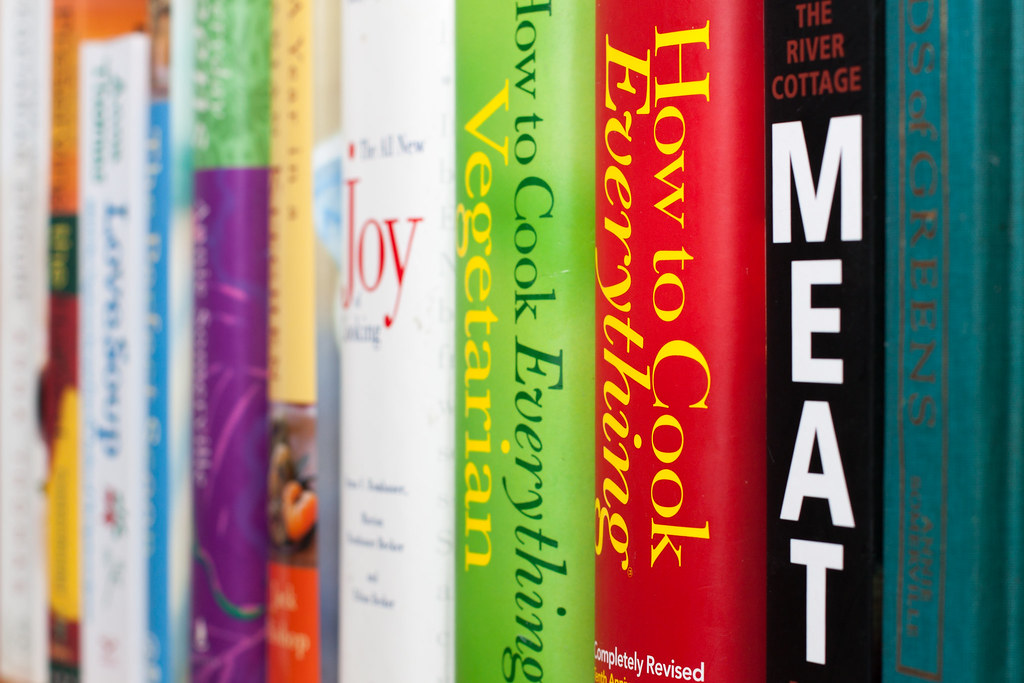 |
| Photo by Tim Sackton |
Have you ever looked up a recipe online, only to find two recipes for the same dish that have vastly different ingredients? That's because there's more than one way to cook just about everything, and some ways are much quicker and easier than others.
That's why you should look specifically for simpler recipes with fewer ingredients if you want to save energy preparing your meals. Fewer ingredients not only means less dicing, mincing, and measuring, but also means fewer trips to the store for fringe ingredients that you don't keep on hand.
There are several popular three-, four-, and five-ingredient cookbooks out in bookstores and online that are full of tasty recipes that are simple to make. There are also websites and food blogs dedicated to simple, easy cooking that are full of recipes that only use a few main ingredients.
Here are some great recipe websites you could try:
- Stone Soup: A blog full of 5-ingredient recipes and simple weeknight dinner inspirations.
- Six Sister's Stuff: A list of 50 easy recipes with six ingredients or less.
- Good Food from the BBC: A list of 40 quick recipes with five ingredients or less.
Buy Pre-Prepared Produce
Most grocery stores have coolers full of pre-washed, pre-chopped, and pre-peeled fruits and veggies in their produce section. While they are a little more pricey than their un-processed counterparts, buying pre-prepped produce can save you several steps and a significant amount of time when you cook.
Drink Green Smoothies

Green smoothies are a great way to get more healthy fruits and veggies in your diet without having to cook. The only prep work you have to do is washing whatever healthy produce you have on hand and tossing it into a blender.
Smoothies are also a great way to use up extra fruit and veggies that are close to going bad. You can make them anytime you're in a pinch for time or make them a regular part of your everyday diet.
You can make fruit or green smoothies with just about whatever you have on hand, depending on your tastes and nutritional needs. Here is an article with 25 easy green smoothie recipes to help you get started.
No-Cook Meals

There will be days when you're just too tired, too breathless, or too lazy to slave over the stove. Luckily, there are plenty of simple, healthy meals you can whip up that don't require any cooking at all.
No-cook meals are often easier to prepare than hot foods and almost always take less time. They are also great for hot, summer days when you don't want to heat up your house by using the stove.
Here are some ideas for no-cook meals and snacks you can try making at home:
- Green Salads: Use whatever veggies and salad greens you have on hand with a light dressing for a delicious meal or side dish. Try adding fruit, nuts, hard-boiled egg, or meats like salmon and chicken for a heartier, more flavorful meal.
- Chickpea Salads: You can make a delicious Mediterranean salad with nothing but canned chickpeas, veggies, and hummus dressing. Add some pre-cooked quinoa to make it even better.
- Sandwiches
- Lettuce wraps
- Tortilla wraps
- Veggie nachos
- Fruit salads
You can also find a variety of no-cook, cold meal recipes online, like on this list from Southern Living.
Single-Pan and Single-Pot Meals
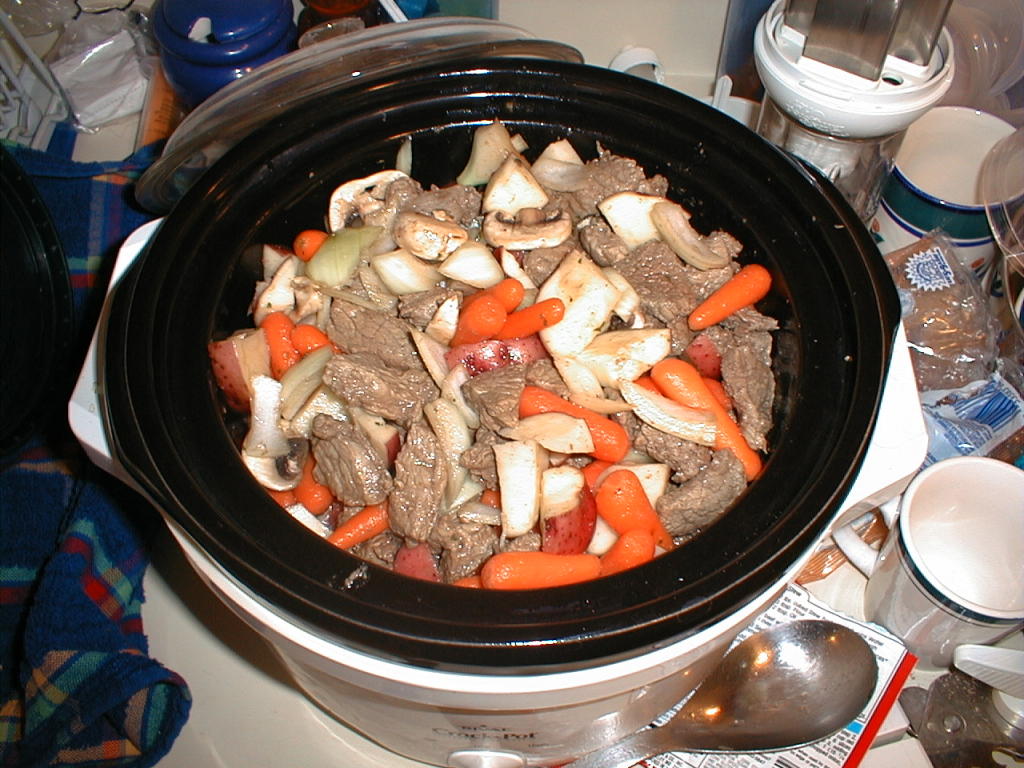
Cooking everything in one big pot or pan can save you a lot of time and energy. It means fewer steps, fewer dishes, and a much simpler cooking process.
Single-pan and single-pot meals can include skillet dinners, casseroles, dutch oven dinners, and slow cooker meals. You can find tons of recipes for one-pan meals online, or easily whip up an improvised meal on your own.
Just about any combination of meat, veggies, and potatoes in a skillet can work to make a delicious, well-balanced meal. Another easy option is to stir-fry whatever vegetables you have on hand and serve them over rice, quinoa, or another healthy grain.
Choose Simple & Easy Foods

If you want to reduce the amount of preparation you have to do to for meals, get the simplest version of the ingredients you can. For example, use frozen or canned carrots instead of peeling and chopping them yourself, or get pre-washed, bagged lettuce instead of a whole head.
Also, consider how difficult a fruit or vegetable will be to prepare before you buy it. For instance, pomegranates, pineapples, and melons take a decent amount of time and effort to prepare for eating. On the other hand, bananas, apples, and berries are require min


 So we can find the best portable oxygen concentrator for your needs!
So we can find the best portable oxygen concentrator for your needs!














